Summary of the First Civilizations: Mesopotamia and Egypt
Contents
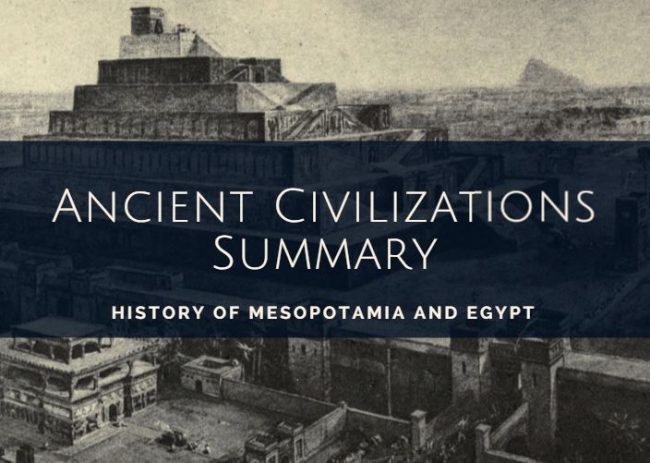
The first civilizations sprung up along the banks of great rivers. This was no coincidence, as mankind had sought out these places that had such good prospects for development since the earliest times. Fertile valleys and alluvial plains were as a result the ideal spaces for populations to grow.
The most important advantages of rivers for human settlements were:
- The waters allowed for the development of agriculture.
- It was easier to transport goods by river as roads were almost non-existent.
- Rivers ensured constant a constant supply of fish. Fish was fundamental in the diets of ancient peoples.
- The constant flow of rivers cleansed the air, removing diseases that could harm people’s health.
- The first cultures developed next to rivers or near the sea, taking advantage of what nature had to offer.
Characteristics of a Civilization
The development of a civilization, with all the complexities that it involved, was characterized by: the use of metals; social and political organization; the establishment of cities and states; the creation of institutions; and the division of labor, with organized production of food, clothing and tools.
In addition to this, there’s organization of commerce; the appearance of superior and monumental artforms; the beginning of scientific knowledge; and finally, the invention of writing, which would allow knowledge to be recorded and spread.
Civilizations In the Near East
The first civilizations developed in the Near East. They had a great influence on Greco-Roman culture and had a critical role in the formation of Western culture.
The lands of the Near East were inhabited by various peoples. In addition to the Mesopotamians and Egyptians, there were the Phoenicians and Hebrews, who were less numerous, but no less important. The Phoenicians were notable for their commercial developments, and the Hebrews for their spiritual contributions.
Before 1000 BC, this region was rather well populated and the different peoples who lived there had developed a way of life mainly based on agriculture.
Mesopotamia
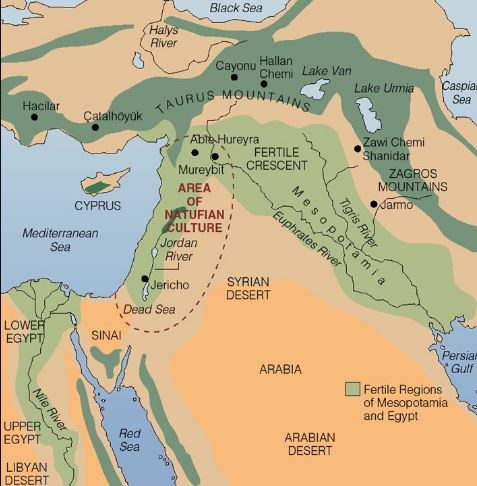
The Greeks called the fertile land between the Tigris and Euphrates rivers Mesopotamia – meaning between two rivers. They run parallel to each other, crossing a flood plain that has been formed with their floods. They are born in the Armenian mountains, crossing the country from north to south and flowing into the Persian Gulf.
Mesopotamia is divided into two geographical areas: Upper Mesopotamia, to the north; and Lower Mesopotamia, to the south. In the upper part, the rivers are rapid, while in the south the waters run slowly and facilitate agriculture.
The Mesopotamian plains lacked natural defenses and were easy prey to invaders, and the land’s wealth was the reason behind many peoples fighting to settle there. The invasions and wars didn’t stop the development of Mesopotamia’s history, shaped by its violent characteristics. Over the centuries, different peoples settled there.
The most important peoples who inhabited Mesopotamia were: the Sumerians, the Babylonians, and the Assyrians.
The Sumerians
The oldest civilization was the Sumerians – in Lower Mesopotamia – whose records allow us to go back to 3500 BC. Nothing is known about their origin, and they weren’t a Semitic people.
Thanks to their artwork, we have a very good idea of how they looked: men of short stature, but with muscular bodies, that shaved their faces and heads. They were farmers and ranchers, they built canals and roads, worked metals, weaved wool and had used the rivers for transport.
Cuneiform Writing
The great Sumerian invention was cuneiform writing, which made it possible to share their thoughts and the events that affected them with future generations.
It was a complex system, and had 700 signs or pictographs. First, they were ideographic (symbols) and then phonetic (sounds). By using a stylus or a graver, the characters were imprinted on damp clay tablets; once the clay dried, the words were set. This is proven by the fact that their tablets can still be read.
The most interesting epic poem in this style, with almost all of it intact, is the epic of Gilgamesh, a hero who fought off monsters and was a tireless traveler.
Research and Development
The Sumerians were the first astronomers and astrologers. They studied and plotted the movements of the Moon, invented the twelve signs of the zodiac and specified that a year lasted 365 days and six hours, divided into 12 lunar months. In mathematics, they developed the sexagesimal division of the circle and created a system of weights and measures. They also invented the brick, artificial irrigation, the plow and the wheel.
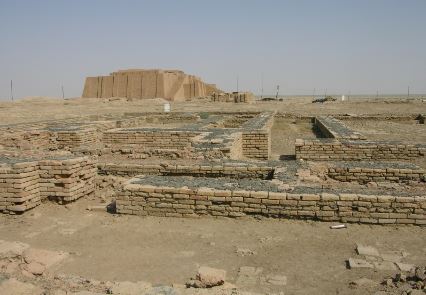
The Sumerian political organization was made up of city-states, the most important being Kish, Ur, Uruk, Umma, and Lagash.
Vocabulary
- Semite = Refers to Arabs, Hebrews and other peoples who developed the great Mesopotamian cultures after the Sumerians, especially the Akkadians and Babylonians, and later the Jews and Arabs.
- Indo-European = Refers to each of the races and languages that share a common origin that spread from India to western Europe.
Struggles between these cities for political hegemony made it easier for them to be conquered by foreign peoples.
The Akkadians
The history of the Sumerians is linked to that of the Akkadians. They were a Semitic people who inhabited in the area north of the Sumerians, and they went on to conquer and unify all of Mesopotamia.
The Akkadians retained their language and even imposed it on the ancient Sumerians; however, the old language of Sumer remained as a holy language and continued to be used by priests. In the great ages of Babylon and Assyria, Sumerian still was used in religious ceremonies.
The Babylonians
A new wave of Semitic people came from the west, the Amorites, who settled in Mesopotamia in about 2100 BC. The most prominent Amorite was Hammurabi, who rose to power in around 1730 BC and transformed the city of Babylon into the center of a new Mesopotamian empire.
Hammurabi conquered the other cities and unified the whole plain under his rule. Art and commerce flourished during his reign.
The Code of Hammurabi
Hammurabi’s everlasting impact lies in his legal developments. The king wrote an orderly series of laws that aimed to guide the lives of the inhabitants of Mesopotamia. This work is known as the Code of Hammurabi and is a remarkable testimony to the level of civilization reached in ancient times.
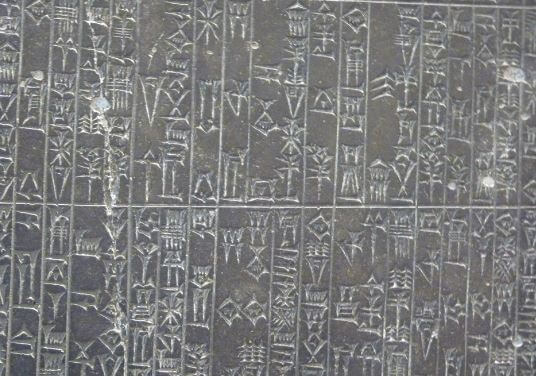
The code was framed by a prologue and an epilogue, containing 280 articles. Its laws relate to civil, criminal and administrative affairs, without there being any radical distinction between them.
Most of the writing is on laws on property, sales, exchanges and expropriation. The articles that make up the first example of the so-called lex talionis are famous: “If a man put out the eye of another man, his eye shall be put out; if any one ensnare another, putting a ban upon him, but he can not prove it, then he that ensnared him shall be put to death; a son strike his father, his hands shall be hewn off.”
Hammurabi clearly showed that it was intended to be an aid to people who sought justice. The code was also seen as a literary work; scribe schools taught it until the first millennium.
The Assyrians
The fertile Mesopotamian plain was the battlefield of the fights between the surrounding peoples who sought to settle in the rich valley, whether they were from the mountains or the desert.
An Indo-European people called the Hittites from the mountains of Anatolia (modern-day Asian Turkey) tried to conquer it; as did the Mitannians, another Indo-European people who eventually settled by other great rivers in India: the Indus, Ganges, and Brahmaputra. The Assyrians, Semites who lived in the mountainous region of Upper Mesopotamia, finally prevailed in about 1170 BC.
Later, the Assyrians and Babylonians fought for power with alternate success.
Violence
The Assyrians are considered the most violent people in ancient history, and their army became the most formidable in the East. Cavalry was critical to them, due to the great maneuverability of their horse archers in all terrains; they were also ruthless warriors and savage looters.
On the other hand, they had a good level of cultural development. Standing out among their works is the Royal Library of Ashurbanipal, whose dominion spanned from the Nile to the Caucasus.
This empire, founded on violence and terror, collapsed when they were defeated in around 612 BC and their capital Nineveh was destroyed.
The Babylonians regained their importance and embarked on a new period, the Neo-Babylonian Empire, which reached its zenith under Nebuchadnezzar II. He took Syria from the Egyptians and conquered Palestine, whose inhabitants were deported to Babylon (587 BC).
No city in the East has left as powerful a memory as Babylon. It became the largest and most magnificent city of all, and its Hanging Gardens, positioned on palace terraces, were one of the seven wonders of the world. Not just the Bible, but also classical Greek writers, gushed with admiration for this city, which they considered the capital of Asia.
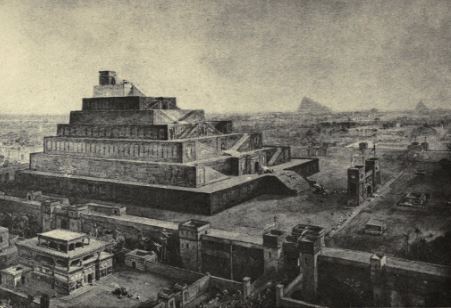
In 539 BC, Mesopotamia was once again invaded by a foreign people: Cyrus, King of the Persians, seized the region and annexed it into his great empire.
Socio-Political Organization
In Mesopotamian society, there were three very separate social groups: aristocrats, free citizens and slaves.
The aristocracy was made up of a number of rich and powerful families, whose members held the highest positions like priests, royal advisers, military chiefs, and ambassadors.
The free citizens were the city’s creative workers, for example architects, scribes, merchants, craftsmen and potters.
Slaves, on the other hand, didn’t have any rights. There were state and private slaves. In addition to prisoners of war, they included indebted free citizens who could sell themselves and their entire families.
At the head of society was the King, whose absolute power came from the creator god. As his representative on Earth, he was the high priest, chief of the army and in charge of the administrative apparatus; he had a large staff to carry out these functions.
The land didn’t just belong to the King; priests and officials owned much of it. Free citizens could also own land.
The economy was based on agriculture and trade.
The main agricultural products grown were barley, wheat, legumes, olive trees, palm trees and grapevines. Agriculture generated surplus crops and there was plenty of leftover wool from livestock, which was traded with other regions for products not found in the area, such as wood and metals.
Worship and Magic
Mesopotamian religion was polytheistic. Assyrians and Babylonians absorbed the religion of the Sumerians, but they also kept their own gods and tried to incorporate them into the new religion.
The great gods are associated with trinities, their chief deities were Anu, the supreme god, who ruled the universe with the help of Enlil, god of earth and air and ruler of men, and Ea, who had the body of a fish, the god of water, and was attributed with the creation of man.
Each city had its own gods and when one managed to impose their supremacy over the others, the god evolved from a local to a national god. Thus, the gods of the successive capitals were in turn promoted to first place above the supreme trinity. For example, Marduk, the god of Babylon, eclipsed Enlil and Anu when their respective cities were conquered as vassals.
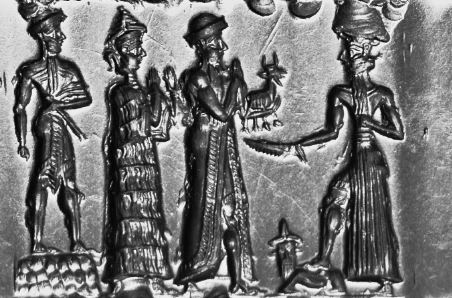
Priests and Seers
Magic was another highly important thing to the Mesopotamians. Priests were seers who predicted the future, acted as oracles, explained dreams, and offered sacrifices. They also observed the stars as they believed that they guided their lives. By studying the sky so diligently, Mesopotamian magi made important scientific discoveries over the years, making important advances in astronomy.
Places of worship were made of tall towers with stairways, called ziggurats or stepped pyramids. Each floor was dedicated to a star and painted with the color attributed to it, and officiants climbed to the top to be closer to the sky; they were true observatories.
Mesopotamian civilization didn’t have stone for their buildings. Mud was used in adobes or bricks as a basic material. They developed rich decorative art, where glazed pottery was used.
Egypt
The Egyptian civilization developed in the Nile River Valley. It was protected by natural obstacles and was able to retain its individuality for more than three millennia. Egyptian civilization was one of the most remarkable phenomena in ancient times due to how long it survived.
The River Nile was the center of Egyptian life. The boundaries of the country were: from the first cataract of the Nile in the south to the mouth of the river in the Mediterranean Sea to the north; Sinai to the east, and Libya to the west.
A Fertile Oasis
The Nile is one of the longest rivers in the world – it measures at 6,671 kilometers long and is born in the heart of Africa.
Egypt is located in a desert climatic zone where there is almost no rainfall and crops are only possible thanks to annual floods.
Every year, between June and October, the water level rises due to the heavy tropical rains in the African plateaus in Sudan and snow melting in the mountains of central Africa.
The river then overflows and the water deposits fertilizing mud called silt on the river banks, which acts a natural fertilizer. When the waters subside, the soil is left rich with moisture that’s beneficial for crops.
In ancient times, increases in water levels also caused many problems in settlements, although the Egyptians got rid of them through the construction of dyke systems and irrigation canals. In this way, they transformed their country into a vast and fertile oasis.
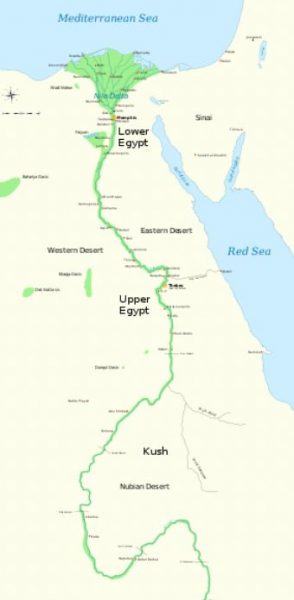
Egypt is geographically made up of two very different areas: one is the delta, where the flood valley is vast, and the other is a narrow corridor of arable land nestled between two deserts. The only link between the two regions was the Nile and its system of rivers.
The country’s entire wealth depended on the river and as the inhabitants were unaware of its source, which was only discovered in the last century, and couldn’t explain the Nile’s floods, they worshiped it as a deity.
The river and its floods are natural phenomena; Egypt, on the other hand, is a human creation.
The settlers of the Nile River Valley first grouped themselves into tribes or clans, and soon into communities called nomes. Gradually, their social organization became increasingly complex, and some local rulers were able to extend their dominance over other villages. Over time, two large independent kingdoms formed: one in the valley – Upper Egypt – and one in the river delta – Lower Egypt. Both kingdoms were unified in around 3100 BC by the legendary King Menes, who made Memphis the capital. From this point, there was only one kingdom, whose leader was called Pharaoh. The monarchs of Upper Egypt were distinguished by wearing a sort of tall crown; while the crown in Lower Egypt was more of a circular cap. When the two kingdoms were united, the pharaohs wore the two crowns, one inside the other.
The Pharaohs
Menes was the founder of the First Dynasty. A dynasty is the descendants or family of the ruler that remains in power through succession. Up until foreign control, there were 26 Egyptian dynasties. The civilization knew glory that was only changed by some periods of internal division. During these times, provincial administrations were strengthened; while there were also times of reunification that saw a return to centralization. There were also periods of great territorial expansion. Egyptian history is divided into three major periods: the Old Kingdom, the Middle Kingdom and the New Kingdom.
The Old Kingdom
This period spans from 2700 to 2200 BC. During this time, Egypt was unified, establishing institutions that were based on a monarchy that ruled by divine right. The pharaohs enjoyed great power and were considered gods. Agricultural land had now been created and religion now had its basic features. They also had advanced technologies such as writing, art, and architecture. (In the image: Khufu, Khafre and Menkaure). The Old Kingdom reached the height of its glory under the kings of the Fourth Dynasty, the builders of the great pyramids, which are one of this culture’s most iconic symbols. Great progress was made during this period, making use of minerals and developing trade with the peoples of the Mediterranean, while craftsmen made fine linen fabrics and beautiful pottery. In around 2200 BC, the Old Kingdom entered a period of crisis. The country’s unity was undone and social order had been destroyed thanks to a long crisis in agriculture and general production, alongside many conflicts. This was the First Intermediate Period, which lasted until approximately 2050 BC. The Middle Kingdom grew from 2050 to 1750 BC. During this time, the kings of Thebes in Upper Egypt managed to conquer the entire country, restoring unity and order and promoting development. The Middle Kingdom was characterized by the great advances they made and the zenith of cultural development in all its manifestations. Egyptian literature entered its golden age during this time. The pharaohs made their home near the Faiyum Oasis, south of Memphis, which was swampland connected to the Nile by a sort of natural canal. This link was improved by the construction of dams, canals and locks, and the transformation of marshes into arable and fertile lands. Even today, Faiyum’s oranges, peaches, figs and grapes are renowned. Again, prosperity came to an end, central power declined, and a horde of invaders, the Hyksos, burst into the delta. They fought with war chariots and iron weapons, both unknown by the Egyptians. Unity came to an end once again and Egypt entered its Second Intermediate Period.
The New Kingdom

This period spanned from 1570 to 1085 BC. During this time, Egypt regained its independence, and the Hyksos were expelled by Theban princes who unified the country once again. The city of Thebes was the center during this stage and Egypt was at its greatest power and largest size. In the New Kingdom, the country was governed by very capable and powerful pharaohs. Thutmose III, of the Eighteenth Dynasty, extended and consolidated their dominion from the fourth cataract of the Nile to the south to the Euphrates River in Mesopotamia, forging a great empire. Egypt became a great military power. The glass and ceramics industries underwent unprecedented development. Pharaoh Amenhotep IV – to limit the power of the priests of Thebes, who were dedicated to Amun, and end polytheism – officially introduced a new solar god, called Aten. However, his successor, Tutankhamun, restored the worship of the old gods and did away with the heretical pharaoh’s innovations. Ramses II had to defend the borders against enemy peoples and new invaders. He was the last of the great rulers, his reign lasting 67 years, and his mummy is preserved to this day in the Egyptian Museum. During the time of Pharaoh Necho, in the Twenty-sixth Dynasty, an expedition that successfully circumnavigated Africa was ordered.
Decline
After 1200 BC, the mighty Egyptian civilization lost power and entered a period of decline. Egypt was invaded successively by the Assyrians (663 BC) and the Persians (525 BC), who made Egypt a satrap or imperial province, until 332 BC when the Greeks under Alexander the Great defeated and conquered them. It was later ruled by the Romans, the Arabs, the Turks and the British. Only in the last century did Egypt once again become an independent nation.
Social Organization
Social classes in ancient Egypt remained almost unchanged over the centuries. However, there was no strict separation, so there was a certain level of social mobility.
The pyramid is the most famous Egyptian monument and allows us to visually demonstrate social life in the country. Therefore, we’ll explain by saying that Egyptian society had a pyramid-like structure:
- At the bottom was the slaves, the lowest group who often built the great public works.
- The second group consisted of peasants, who were at the center of economic development. There were also many craftsmen: weavers, cabinetmakers, goldsmiths, sculptors, carpenters and painters. And finally, there were small merchants.
All of them paid tribute to the pharaoh with labor or goods; talented men could rise to higher levels. - The third group consisted of artists, wealthy merchants, doctors, and scribes. Scribes mastered the difficult art of reading and writing the complicated hieroglyphs and were of special importance and enjoyed great prestige.
- At the top of the social pyramid were the pharaoh and the royal family; then came the nobles, the priests and the warriors. This class held political, social and economic power.
Government
The pharaoh – the monarch by divine right – was the absolute master of all of Egypt and its inhabitants. He was the high priest, head of the army, the country’s administrator, responsible for keeping order and imparting justice, and the master and lord of all its lands.
The pharaoh’s blood was divine, so it shouldn’t be mixed with the blood of ordinary folk. Therefore, he married a sister or another relative; he had several wives and his power passed to the eldest son.
Officials
The pharaoh led an administration made up of numerous officials, the most important among them being the vizier. He oversaw the entire administration, encompassing everything from the treasury and military arsenal to agriculture and public works.
Other officials were under his command. The scribe, an indispensable asset in administrative tasks, was common; any Egyptian could become a scribe and the sole condition was just being able to do so.
Egyptian politics life focused on the unity of the realm.
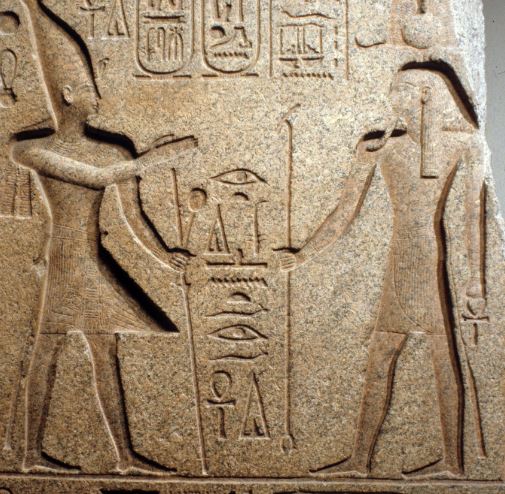
Women
They were free and enjoyed a level of independence and authority that was rare in the ancient East.
Egyptian women went wherever they wished and didn’t wear a veil. Many times, they are portrayed as being on the same level as their husbands.
Women inherited goods from their parents on an equal footing to their brothers.
Egyptian women wore wigs, painted their eyes, lips and nails. They could eat and dance in public, be merchants and manage their assets, and do practically everything men did.
Agriculture: The Cornerstone of the Economy
The Egyptian economy relied entirely on agriculture.
They grew various types of wheat, which was the staple in their food, and barley, with which they brewed beer.
Vegetable crops included: onions, cucumbers, leeks and garlic. The main fruits were dates, figs, pomegranates and melons. An important crop was flax, which they used to make clothes.
They also reared a large number of animals: sheep, goats and cattle. Donkeys served as pack animals. They also reared geese and ducks, and their meat was very desirable. Fish was an important part of the Egyptian diet, especially among the poor.
The Egyptians supplemented their economic activities with precious metal mining, craftwork and papyrus production.
Economic System
The economic system was characterized by the redistribution of surplus agricultural production. The state collected the surplus through taxes collected in kind and stored them in state granaries.
The Egyptians were also navigators and were had regular trade with the peoples of the Mediterranean and the regions in the south. Through bartering with caravans, they obtained cedar and ebony wood, gold, slaves, incense and horses.
They exported cereals, papyrus scrolls and crafts. Even in late antiquity, Egypt was the granary of the Roman Empire.
Egypt only had currency at the very end of its history and, consequently, all services were paid for in kind.
Religion
Egyptian religion was polytheistic. Originally, each town had its own god and cult. The gods were represented as animals, or with human bodies and animal heads.
Menes and his successors worshiped the falcon Horus, the god of the rising sun. Later dynasties promoted the worship of Ra, the solar god who ruled the world.
With time, the various local and national gods were associated with the supreme god and they added the name Ra to them; so, in Thebes, they worshiped the ram god Amun, who became Amun-Ra.
The Egyptians deified forces of nature. The most cult was the cult of Osiris, the god of fertility and the dead, symbol of the Sun and the Nile. He was torn apart by the god Seth, the god of the desert, and rebuilt by his wife Isis, the lunar goddess and protector of children, who returned him to life and gave him the task of judging the dead.
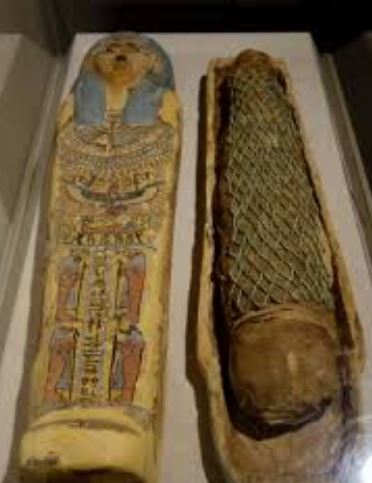
Eternal Life
The Egyptians believed in eternal life, meaning that the soul could continue to live as long as it had its body. For this reason, it was essential to preserve the body, which was embalmed – mummified – and placed in a tomb that would allow the soul to continue to live in the great beyond.
In order to attain eternal life, one had to be tried by the tribunal of Osiris, where the soul confessed its sins and then it was weighed on the scales of justice. If it weighed less than a feather, they were saved forever and entered the kingdom of Osiris, while the unjust were devoured by monsters.
So that the souls of the dead wouldn’t be hungry or thirsty in the afterlife, Egyptians put supplies of food, clothes, jewels, and more, next to the dead in their tombs.
Temples
They were the houses of the gods, and their statues were objects of worship. Noteworthy temples include Abu Simbel, Luxor, and Karnak.
Worship and administration of the gods’ wealth was the responsibility of priestly schools, who had economic and political power as a result.
There were public and secret parts of cults.
Generally, one arrived at the temple door through an avenue flanked by sphinxes that seemed to stand guard over the relevant god.
The temple consisted of three sections: first, a gigantic door, granting access to a large avenue or a wide, open sky courtyard. This was the public part of the temple. Then one went into the hall, which had a ceiling supported by columns, where the cult services were held. Finally, the secret part was a narrow and dark refuge, in which only the priests and Pharaoh were allowed.
The Great Hypostyle Hall of the temple of Amun in Karnak, in Upper Egypt, is more than 20 meters high, and was famous in ancient times as being a great architectural marvel; its roof was held up by 134 columns.
Egyptian Culture
Egyptian civilization made remarkable cultural developments in all facets of life.
Writing
The Egyptians wrote their own history through their monuments and on papyri. They developed a complex writing system: hieroglyphs. These symbols could have three meanings: what they depicted, the idea they suggested or the sound corresponding to the name of the object.
In daily use, the inhabitants of the Nile River Valley simplified the symbols and developed a cruder, more standard script, which was easier than what the scribes used in their daily administrative tasks.
Learning to write was difficult and it was taught in special schools.
The Egyptians had an unparalleled writing material at their disposal: papyrus. It was obtained from the core fibers of the stem of a plant, cyperus papyrus, which grew on the banks of the Nile; papyrus scrolls were light, adaptable and user-friendly. They had the downside of being sensitive to moisture and fire, which had tragic consequences for historians.
One of the common motifs in Egyptian art is the depiction of a scribe squatting on a mat, with a writing reed in his hand and a scroll of papyrus on his knees.
When Egypt fell to foreign rule, all meaning and knowledge of hieroglyphic writing was slowly lost to oblivion.
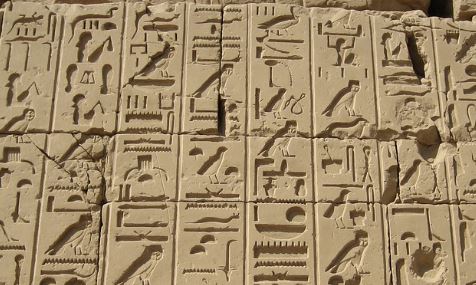
Hundreds of years passed before one of Napoleon Bonaparte’s soldiers stumbled across a stone inscribed with hieroglyphic texts in 1798 in Rosetta (near Alexandria), in the Nile delta.
The French scholar Jean-Francois Champollion successfully deciphered the hieroglyphs, thus providing the key to the history of Pharaonic Egypt.
Art
Egyptian artists were men of great expertise. They sculpted statues, engraved large stone friezes, and made statuettes out of stone and metal. In addition, they painted and recorded scenes from real life and the supposed lives of the gods through fine and elegant art.
The human body was always depicted from the front, with the head and limbs in profile; meanwhile, animals were only depicted in profile. Humans, animals, objects and landscapes were portrayed without any perspective and the lack of depth accentuated the composition, a feature common in all works of Egyptian art.
The God-King Figure
Political and religious unification were linked, and the monarch was seen as an incarnation of the divine. Because of this, Egyptian art that was born out of worship of the dead, developed to exalt and immortalize the figure of the god-king.
Worries about life after death inspired the creation of great temples dedicated to the gods and the construction of many types of tombs: mastabas, low and solid constructions, whose upper parts had the shape of a truncated pyramid.
The tomb of King Djoser from the Third Dynasty, in Saqqara – created by Imhotep, the most well-known Egyptian architect – is a six-storey pyramid, made up of a series of mastabas on top of one another. It shows the link between the mastabas and the great pyramids, which began to be built during the fourth pharaonic dynasty. Rock tombs called hypogea should also be noted.
The Pyramids
They are the most striking constructions in their monumental funerary complex, the position of which symbolized the journey of the deceased ruler to the western realm of the dead. They had to be eternal dwellings, and for that reason they were built – just like temples – with materials more resilient than those used in royal palaces, which were only used during the reign of the king.
The Pyramids of Giza, built in honor of the Pharaohs Khufu, Khafre and Menkaure, near the Nile and a few kilometers from Cairo, still serve as a symbol of Egypt and a destination for all tourists who travel there.
The ancients ranked the largest of the three pyramids, which belonged to Khufu, among the seven wonders of the world, and it’s the only one of the wonders that still survives. It’s 144 meters high; its foundation, an almost perfect square, measures more than 277 meters per side, making it more than five hectares large.
In his trip to Egypt in around the middle of the 5th century BC, Herodotus said that 100,000 men had worked for 20 years to build it. However, the size itself is nothing compared to the flawlessness of its design. Its faces are positioned to face the four cardinal points exactly; the slabs are placed on top of each other so perfectly without any mortar and it’s impossible to slide the blade of a knife between them.
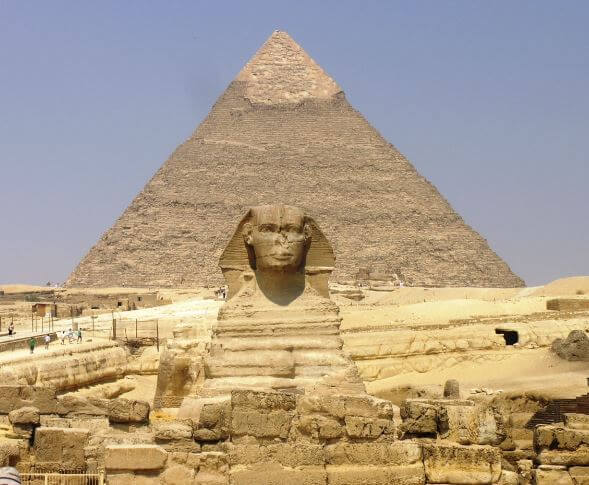
Near the Pyramid of Khafre, there’s another iconic monument of Egyptian art: the Sphinx, a marvelous animal with a lion’s body and a human head, which depicts the face of the pharaoh. It’s 20 meters high and 73 meters long.
Grave Robbers
The pharaohs were buried with all the luxuries that had surrounded them in life, so that they wanted for nothing in their eternal life. These treasures attracted grave robbers. The kings of the New Kingdom were convinced that pyramids didn’t guarantee the safety of their remains, so they ordered their tombs to be dug in stone, in the Valley of the Kings, near Thebes.
The pharaohs thought that they’d placed an insurmountable obstacle between them and the tomb raiders, but they were wrong. After a while, most of the treasures accrued in the tombs were stolen.
